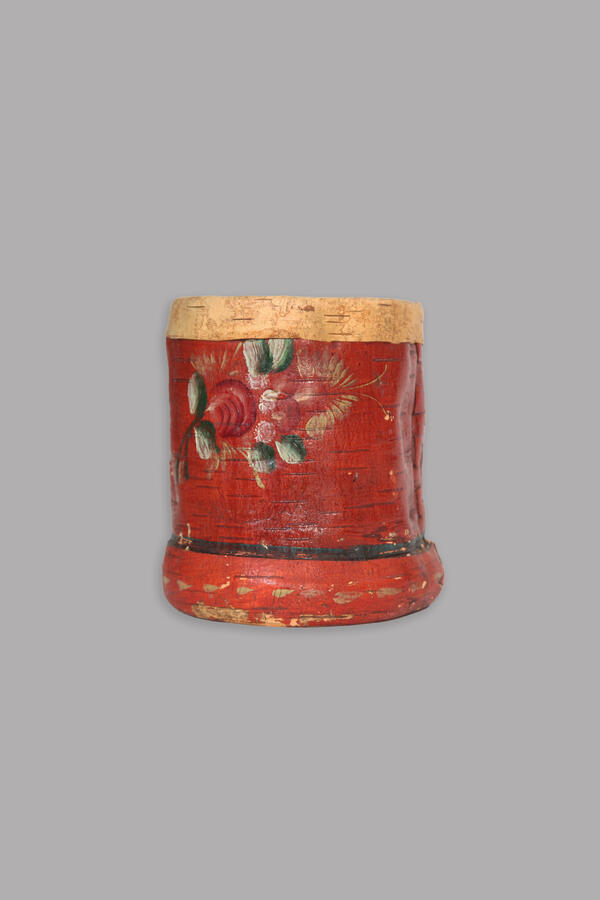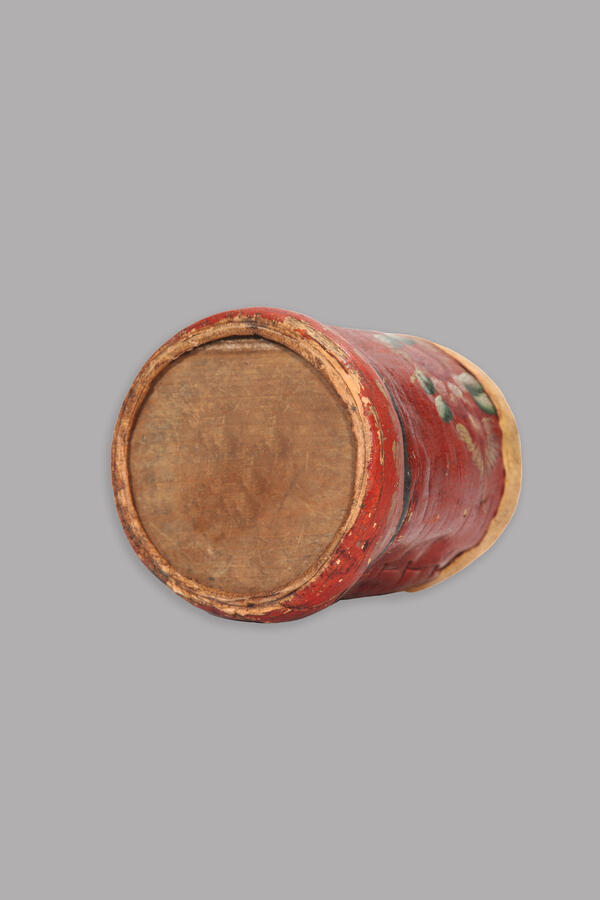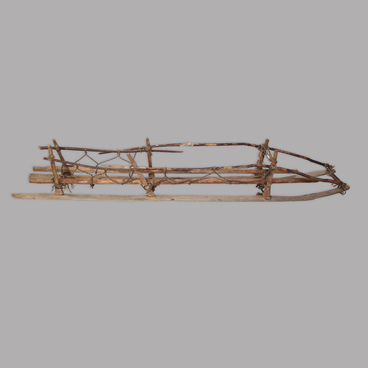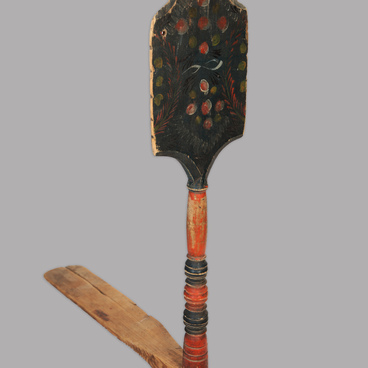Beresta is the outer layer of birch bark, one of the most common materials in everyday life of Russian peasants. It was used to protect log houses and window sills from moisture, to repair broken clay pots and to weave ropes, to make musical instruments, grips for tools, toys for children and boxes. People also wrote on it: birch-bark letters are a monument of culture of the 11th century Old Rus. Birch bark was used to make kitchenware and utensils: baskets, bags, chests, boxes, horse harness, fishing tackle. The most common item made of birch bark was a tues, also called “tuesok” and “burak”.
A tues is a small birch bark container with a sturdy wooden bottom and a lid. The tues from the collection of the Komi-Permyak Local History Museum is made in a traditional way — it consists of two layers of birch bark similar to a thermos. The inner layer is one piece and solid, and the outer one is fastened with a zig-zag lock on top. Birch bark preserves the temperature inside the tues and keeps out moisture. People used to store salt, tea, butter, cottage cheese, sour cream in such containers. In winter, fresh berries remained fresh, while in summer kvass and milk were kept cool.
The burak was often decorated with carving or painting. This tues is decorated with a floral pattern: on both sides small bouquets of white and crimson roses and yellow cincfoils are painted on a red background. Such a pattern is characteristic of the Obvinsky painting, a folk craft of the Urals. The painting got its name from the river Obva, a tributary of the Kama River in the Perm region; it has been around since the second half of the 19th century. The patterns on the tues are made in the technique of “razbel”: the craftsman put whitewash on one edge of the brush, and paint of the primary color on the other. Smooth movement of the brush left a light stripe on the outer edge, softened the colors and increased the volume of the painting.
Tueses were not only widely used in the household, but also served as interior decor. A tuesok has always been a useful and beautiful gift, and it is still a popular souvenir from different regions of Russia. This red-colored tues was handed over to the Komi-Permyak Museum in the 1920s by Pyotr Ivanovich Subbotin-Permyak, the founder of the museum.
A tues is a small birch bark container with a sturdy wooden bottom and a lid. The tues from the collection of the Komi-Permyak Local History Museum is made in a traditional way — it consists of two layers of birch bark similar to a thermos. The inner layer is one piece and solid, and the outer one is fastened with a zig-zag lock on top. Birch bark preserves the temperature inside the tues and keeps out moisture. People used to store salt, tea, butter, cottage cheese, sour cream in such containers. In winter, fresh berries remained fresh, while in summer kvass and milk were kept cool.
The burak was often decorated with carving or painting. This tues is decorated with a floral pattern: on both sides small bouquets of white and crimson roses and yellow cincfoils are painted on a red background. Such a pattern is characteristic of the Obvinsky painting, a folk craft of the Urals. The painting got its name from the river Obva, a tributary of the Kama River in the Perm region; it has been around since the second half of the 19th century. The patterns on the tues are made in the technique of “razbel”: the craftsman put whitewash on one edge of the brush, and paint of the primary color on the other. Smooth movement of the brush left a light stripe on the outer edge, softened the colors and increased the volume of the painting.
Tueses were not only widely used in the household, but also served as interior decor. A tuesok has always been a useful and beautiful gift, and it is still a popular souvenir from different regions of Russia. This red-colored tues was handed over to the Komi-Permyak Museum in the 1920s by Pyotr Ivanovich Subbotin-Permyak, the founder of the museum.





